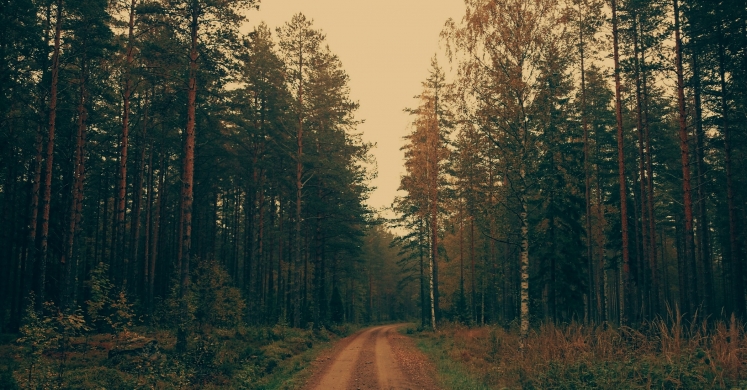Blog

#bioPGH Blog: Will-o’-the-wisps, the Haunt of the Swamp
 A resource of Biophilia: Pittsburgh, #bioPGH is a weekly blog and social media series that aims to encourage both children and adults to reconnect with nature and enjoy what each of our distinctive seasons has to offer.
A resource of Biophilia: Pittsburgh, #bioPGH is a weekly blog and social media series that aims to encourage both children and adults to reconnect with nature and enjoy what each of our distinctive seasons has to offer.
Let’s say you’re a weary traveler, in a century long gone. You’ve walked a dirt road through woods all day, and now night is falling but you have not yet reached your destination. Perhaps there might be an inn nearby or a hospitable farm house so you can rest your dusty feet. But wait…what was that? Off the road, so slight in the distance? A light? A faint light, but it seems to be moving in the darkness. It must be a lantern! Leaving the road behind, you follow the light, but as you approach, it disappears only to reappear somewhere further away. You continue to follow, yet now find yourself sinking into a boggy ground, the distinctive smell of a swamp rising around. Oh no! Where was the road?
Such was the fate of a character in European and early North American folklore of the will-o‘-the-wisps—an eerie light that appeared, disappeared, and reappeared over swamps and bogs near roads, leading nighttime travelers astray. Variations of will-o’-the-wisp legends have haunted bedtime stories and tavern tall-tales for generations, but was there really something spooky happening? What were the phantom lights, these will-o'-the-wisps? In honor of this week’s night of haunts and ghouls, let’s explore this spooky sprite with a scientist’s eye!
There is a very important reason that will-o’-the-wisp stories most often end with a traveler wandering into a marsh or bog: the light that inspired will-o’-the-wisp tales might have been swamp gases. Swamps, or rather wetlands, are an important part of nature, acting as natural “filters” for water, but they are also highly ecologically productive and host a wide diversity of organisms—from plants to microbes. In part because of microbes and natural biogeochemical processes, wetlands also produce a variety of gases, particularly methane. It has been suggested that the faint “wisp” of a glow may have been chemiluminescence, or a reaction between just the right combination of chemicals that gave off energy in the form of a brief wisp of light. (For chemistry buffs, chemiluminescence is typically the result of either oxidation, the loss of an electron, or hydrolysis, a reaction involving water.) Visible light given off from such a reaction could indeed be faint and fleeting, which is probably why legend suggests that travelers followed moving lights.
It has also been suggested that will-o’-the-wisps might have been the bioluminescence of certain types of fungi. Just over seventy species of fungi are able to “glow” at night because they produce low levels of the same compounds that allow fireflies to glow, luciferins. Fungi that glow produce differing concentrations of luciferins at different times of the 24-hr day (their circadian rhythm!), peaking production at night. Perhaps the legendary traveler, after hours alone in the dark, followed the glow of even simple fungi—eager for any type of light they could see.
Though especially around Halloween, it is the most fun to talk about spooky ideas, I do have to add that there may not actually be a need for an explanation of a will-o’-the-wisp. Legends abound, as they have for centuries, but documented historical sightings of the phenomena are scarce and contemporary sightings are virtually non-existent. Has anyone actually seen a will-o’-the-wisp? Perhaps, perhaps not. Around Halloween, though, it’s certainly a little more fun to wink, keep an open mind, and ask…perhaps?
Connecting to the Outdoors Tip: Will-o’-the-wisps are associated with swampy, marshy areas, which means it’s just another reason to visit a wetland! Even if you don’t spot a spritely light, you can see a variety of other plants and wildlife—even this time of year. However, if your goal is to find a glowing phenomenon, though, be sure to follow all park rules, which may mean leaving the park at dusk. Also, most wetland parks have established boardwalks to protect the delicate habitats. Please stay on the boardwalk even if you spot something glowing in the distance!
Continue the Conversation: Share your nature discoveries with our community by posting to Twitter and Instagram with hashtag #bioPGH, and R.S.V.P. to attend our next Biophilia: Pittsburgh meeting.
Resources
Encyclopedia Brittanica: Jack-o’-Lantern
History: History of the Jack-o’-lantern
USGS: Greenhouse Gas Emissions from Coastal Wetlands
Roels and Verstraete 2001: Biological formation of volatile phosphorous compounds
Edwards 2014: Will-o’-the-Wisp: an ancient mystery with extremophile origins?
Smithsonian Magazine: The Secret Behind Bioluminescent Mushrooms’ Magic Glow
Photocredits: Wikimedia user Robsphotos CC-BY-SA-4.0

